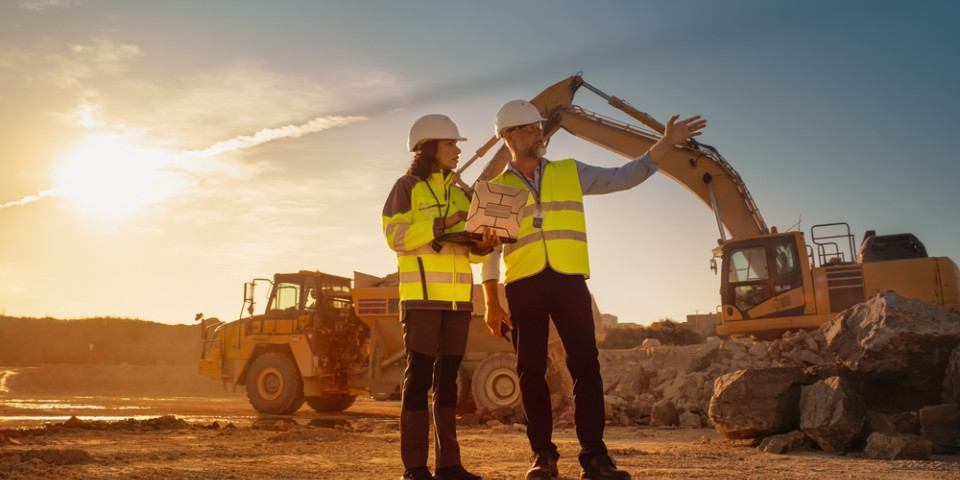Latest News
Construction Diversity Can Drive Creativity and Problem-Solving in the Field
Posted on Monday, 3rd February 2025

The construction industry shapes the modern world by building everything from towering skyscrapers to the infrastructure that keeps communities running. However, the industry needs fresh ideas and innovative solutions more than ever as projects grow increasingly complex and challenges like sustainability become urgent.
That’s where diversity can be pivotal. When your team includes people from different backgrounds, you unlock new ways of thinking and problem-solving. It brings creativity, helps you tackle challenges more effectively and gives your business a competitive edge.
Diversity in the UK Construction Industry
Historically, the UK construction industry has been predominantly male and less ethnically diverse, creating a significant risk of unconscious bias in decision-making. For underrepresented groups, barriers like a lack of inclusion, persistent stereotypes and fewer opportunities make it challenging to thrive in the field. For example, women comprise only 14% of the UK’s construction workforce, highlighting the urgent need for change.
Thankfully, the industry is working to address this by introducing initiatives focused on inclusive hiring practices and partnerships with diversity-focused organisations. In 2024, about 303,000 women contributed to the country’s construction sector, a sharp increase from the 283,000 who did in 2019. These efforts aim to break down barriers, encourage inclusivity and create a more innovative construction sector.
Why Diversity Should Be a Focus in Construction
Diverse teams are your secret weapon for solving complex challenges and sparking innovation. Bringing together people with different backgrounds and perspectives creates an environment where fresh ideas thrive and creative solutions emerge. However, negative stereotypes and dated perceptions resulted in nearly 90% of women in a 2021 survey saying they’ve never considered a career in construction. Building an inclusive workplace challenges this perception and retains top talent, leading to a more dynamic workforce.
Moreover, inclusive work environments increase employee satisfaction and retention and address the industry’s ongoing skill shortages by tapping into a broader talent pool. Take inspiration from initiatives like the Department for Work and Pensions’ 2022 partnership with a non-profit called Women into Construction, which helped hundreds of women accept rewarding roles in construction and engineering. Embracing inclusivity aligns with societal and governmental goals and demonstrates a commitment to progress.
Strategies to Improve Diversity
Diverse teams consistently outperform their counterparts in innovation and problem-solving. However, improving this aspect in the construction industry requires intentional action and a commitment to fostering inclusivity. Here are some practical strategies to help you build a more inclusive workforce.
- Engage with schools and communities: Partner with schools, colleges and community organisations to introduce underrepresented groups to construction careers and promote STEM programmes.
- Revamp recruitment processes: Use blind recruitment practices to reduce unconscious bias and actively seek candidates from different backgrounds through partnerships with diversity-focused businesses.
- Offer mentorship programmes: Establish mentorship opportunities to support women, minorities and other underrepresented groups in advancing their careers within the industry.
- Invest in diversity training: Provide regular training for leadership and employees to create awareness about unconscious bias and promote inclusive workplace behaviours.
- Measure and report progress: Set measurable goals, track your progress and provide transparent updates to show your commitment to change.
Overcoming Challenges in Promoting Diversity
Change can be daunting, but addressing resistance through education and awareness campaigns makes equity a reality in construction. Help your team understand how inclusivity benefits everyone — creativity flourishes, problem-solving improves and the industry strengthens.
Currently, construction must prioritise its gender pay gap, which represents a massive obstacle to attracting and retaining various talents. To fix this, invest in equity-focused policies like equal pay and flexible working hours, which make the industry more accessible and fair. Remember to leverage government programmes and incentives to support workplace diversity — they’re powerful tools to help you take concrete, impactful steps toward change.
Building a More Inclusive Construction Industry
Take the lead in fostering diversity and inclusion within the industry. Creating an inclusive environment and actively supporting underrepresented groups drives innovation, solves challenges more effectively and secures a brighter future.
 Author: Evelyn Long
Author: Evelyn Long
Evelyn Long is a leading advocate for diversity and mental health in the construction industry. As a contributor to respected publications such as Construction Executive and Construction Business Owner, she shares her insights on fostering inclusivity and well-being in the trades. She also serves as the Editor-in-Chief of Renovated Magazine, where she drives conversations around innovative practices and cultural change in construction.


